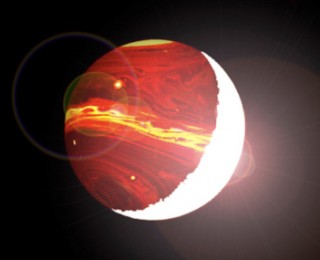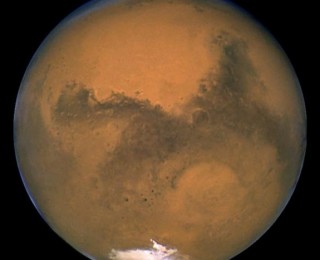
by Caroline Morley | Oct 19, 2012 | Daily Paper Summaries
Astronomers don’t stop after discovering planets in systems near and far from our own solar system. The next big step is to characterize the planets. We want to understand what they’re made of, what their atmospheres look like, whether they have clouds, how massive they are, how old they are, etc. As it turns out characterizing exoplanets is really, really challenging for both observers and modelers. The challenges encountered are well illustrated by the saga of WASP-12b.

by Caroline Morley | Sep 21, 2012 | Daily Paper Summaries
Astronomers have started trying to understand how to organize classes of exoplanets based on their physical characteristics. As it has turned out over the last ten years, exoplanets are considerably more complicated to classify than stars. The evolution of star is based (almost) exclusively on how massive it is at birth. Instead, this paper classifies hot exoplanets by their level of irradiation from their host star and their chemical composition.

by Caroline Morley | May 31, 2012 | Daily Paper Summaries
Mars is observed to have sedimentary rocks, which provide proof that liquid water once existed on the Martian surface. However, the surface of Mars would have been too cold to have permanent rivers and lakes; the authors of this paper suggest seasonal snowmelt could create enough liquid water to form these rocks.

by Caroline Morley | May 3, 2012 | Daily Paper Summaries
To characterize the newly-discovered population of small planets, this team from UC Santa Cruz investigated how planets lose mass over their lifetimes, and determined how this loss will affect planet populations. This paper suggests that we can understand the population of small planets using mass loss models, and we make predictions using these models for the masses of irradiated super-Earths.
by Caroline Morley | Dec 7, 2011 | Daily Paper Summaries
Venus transits the Sun, from the frame of the Earth, about twice every century, separated by eight years. The last one happened in 2004, and another is happening in June 2012. Observing the transmission spectrum during the 2012 transit—and comparing it to measured transmission spectra of the Earth, taken during lunar eclipses—will tell us how hard it will be to distinguish two planets that look identical in mass and radius, but have extremely different atmospheric properties.

by Astrobites | Nov 20, 2011 | Undergraduate Research
This month’s undergrad research installment features modeling of galaxy redshift distribution and a study of oscillations in the solar corona.





